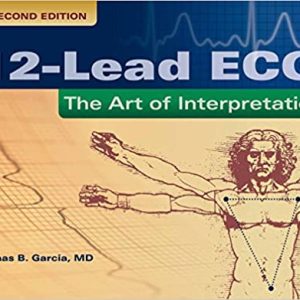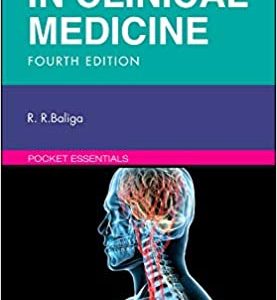Description
The Great War, also known as World War I (1914–1918), had a profound impact on the development of modern medicine. The unprecedented scale of the conflict, with its trench warfare, massive casualties, and technological advancements, forced doctors and medical researchers to adapt quickly, creating lasting changes in how medicine was practiced and understood. Here are some key areas where the war contributed to the birth of modern medicine:
### 1. **Advances in Surgery**
– **Trauma and Wound Care**: The nature of warfare, particularly the use of high-explosive shells, machine guns, and poison gas, caused horrific injuries. Surgeons had to adapt quickly to treat massive numbers of casualties. This led to significant advancements in **surgical techniques**, especially in the treatment of fractures, amputations, and the management of infections.
– **Plastic Surgery**: The need for reconstructive surgery grew as soldiers suffered facial disfigurements from shrapnel, burns, and gunshot wounds. Pioneers like Sir Harold Gillies developed groundbreaking techniques in **plastic and reconstructive surgery**, particularly for soldiers with facial injuries. This laid the foundation for the field of modern plastic surgery.
### 2. **The Use of X-Rays**
– The use of **X-ray technology** expanded rapidly during WWI. The discovery of X-rays by Wilhelm Röntgen in 1895 had already sparked interest in medical imaging, but the war brought about the need for more widespread and sophisticated use of this technology. X-rays were employed to locate shrapnel and bullets lodged in soldiers’ bodies, enabling more precise surgical interventions.
– **Marie Curie** played a key role during the war by establishing mobile X-ray units, called **”Little Curies,”** which helped bring the technology to field hospitals and front lines.
### 3. **Antiseptic Techniques and Infection Control**
– Before WWI, infections from battlefield wounds were a major cause of death. The widespread use of **antiseptic techniques**, pioneered by figures like Joseph Lister, had already made some headway in reducing infections in civilian surgery, but the war dramatically highlighted the need for better infection control.
– The development of **antibiotics** didn’t occur until the discovery of penicillin in the 1920s, but the war accelerated research into **antiseptics** and the understanding of how to better prevent infections. Surgical antisepsis, more advanced wound care, and the increased use of **sulfa drugs** (early antibiotics) were all pivotal during the war.
### 4. **Psychological Trauma and Psychiatry**
– The psychological toll of the war, particularly the new phenomenon of **”shell shock”** (now understood as **post-traumatic stress disorder, or PTSD**), led to significant advances in the field of **psychiatry**. The brutal and intense warfare caused psychological damage in many soldiers, often manifesting as paralysis, tremors, and emotional breakdowns without any apparent physical injury.
– Psychiatrists, notably in Britain and France, began to develop new treatments for these psychological wounds, including the use of rest, hypnosis, and even the early forms of **psychoanalysis**. The war forced the military and medical communities to acknowledge the psychological costs of war and consider the long-term mental health of soldiers.
### 5. **Blood Transfusion and Blood Banks**
– One of the most notable advancements in modern medicine during WWI was the development and widespread use of **blood transfusions**. Blood transfusion techniques had been experimented with since the late 19th century, but the war drove the need for more effective and practical applications.
– The development of the **blood bank** as a practical medical resource was a direct result of the war. **Dr. Oswald Hope Robertson**, an American physician, is often credited with the first successful storage and transfusion of blood for soldiers on the battlefield. Blood types and compatibility were better understood during the war, paving the way for modern blood donation services.
### 6. **The Rise of Medical Research and Innovation**
– The unprecedented scale of the war forced governments and medical institutions to pour resources into medical research and innovation. Governments funded the development of new treatments, and medical scientists were encouraged to explore innovative ways to manage the staggering number of injuries.
– Research on **vaccines**, including vaccines for **tetanus** and **typhoid fever**, was ramped up. In addition, the war also highlighted the importance of **public health measures** to prevent the spread of diseases like **influenza**, which would cause the devastating 1918 flu pandemic.
### 7. **The Evolution of Military Medicine**
– WWI saw the rise of **military medical services** organized into field hospitals, which could treat casualties near the front lines and then evacuate them to rear hospitals for further care. This system laid the groundwork for the modern **emergency medical services** (EMS) we recognize today.
– The widespread use of **ambulance trains**, **field hospitals**, and organized evacuation systems for the wounded were part of the logistics and medical support systems that evolved during the war. The work done to treat soldiers under dire conditions during WWI influenced the development of disaster medicine and emergency care in civilian settings.
### 8. **Public Health and Sanitation**
– The war demonstrated the importance of **public health** and **sanitation** in preventing the spread of disease. Troops living in the trenches faced poor sanitary conditions, contributing to the spread of infectious diseases. This led to the development of more systematic approaches to sanitation, which were later applied to civilian health systems worldwide.
– **Quarantine measures** and the establishment of protocols for disease control during the war would go on to inform public health practices in the years to come.
—
### Legacy and the Transition to the 20th Century
The legacy of medical advancements from WWI was far-reaching, influencing not just military medicine, but also civilian healthcare. Many of the innovations from the war helped shape the medical landscape of the 20th century, including the expansion of surgical fields, the development of advanced diagnostic tools, the birth of modern psychiatry, and the establishment of more organized and effective healthcare systems.





Reviews
There are no reviews yet.